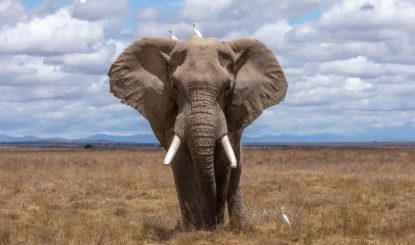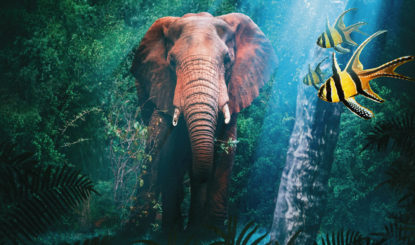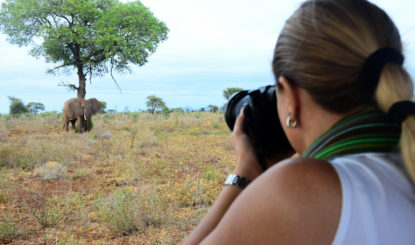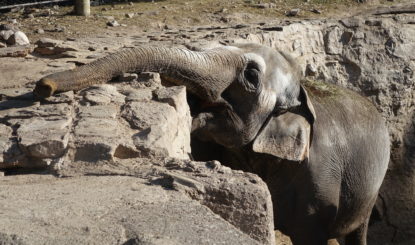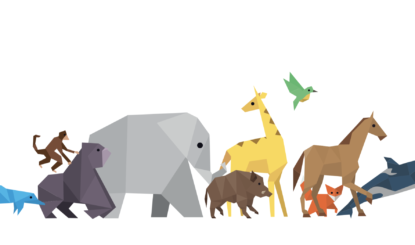Birth of a baby elephant: Zurich Zoo is playing with fire
Zurich Zoo has just announced the birth of a baby elephant on the Easter week-wend, with moving images and videos. But behind this “good news” lies a grim reality: the calf’s chances of survival are slim. In captivity, elephants are unable to satisfy their basic needs and are exposed to numerous physical and psychological stresses, as well as various diseases, including deadly viruses such as EEHV herpes. Condemning a baby elephant to a life of boredom and suffering, in the name of so-called “species conservation”, is a dangerous illusion. It’s time zoos put an end to elephant breeding programs.
On April 19th, 2025, an Asian baby elephant was born at Zurich Zoo. In a press release dated the same day, the zoo speaks of “cautious optimism”, as “the first weeks of a calf’s life are always the most delicate”. The zoo goes on to explain that the baby elephant is doing quite well, and that its mother, elephant Farha (born at the same zoo in 2005), is playing her role as mother perfectly – a role she knows well, having already given birth four times. What the zoo doesn’t say is that Farha has in fact only given birth to one viable baby elephant (Ruwani, born in 2017, since died of elephant endotheliotropic herpes virus, EEHV). The other two calves died shortly after birth. Since 2020, two elephant calves born at Zürich Zoo to other mothers have died, one of herpes virus, the other beaten to death by the other elephants in the enclosure (see FFW press release of January 17, 2023, among others).
The zoo is right to be concerned: the mortality rate of captive elephant calves, especially in Zürich, is very high. The risks are intrinsically linked to the conditions of captivity, which are inherently insufficient to satisfy the needs of elephants, and extremely stressful for these highly intelligent animals. In particular, captive elephants are prone to the herpes virus (EEHV), which is often fatal to the young – whereas in the wild elephants appear well-adapted to survive exposure. For the record, in 2022 alone, three elephants died from the herpes virus at Zürich Zoo. There is therefore a serious risk that the newborn elephant, who was named “Zali”, will contract the disease and die.
Added to this risk is the fact that, in normal elephant populations, the interval between elephant pregnancies is around 4-5 years – whereas Farha’s last pregnancy was in 2023 (when she lost her baby shortly after birth). “It is physically and psychologically harmful to a female elephant to subject her to repeated pregnancies in such a short space of time, expecially since all her preceding calves have died. The Zoo’s obsession with breeding is cruel and irresponsible.” notes Dr. Keith Lindsay, elephant biologist and member of the IUCN African Elephant Specialist Group.
Male elephants are also more difficult to keep, as zoos lack the space to keep them in their normal social mileu, where they can can associate with other males and with females. Instead they are separated from their fellow elephants at a young age, never to see them again. Does Zurich Zoo intend to keep the little Zali once he reaches sexual maturity, if he survives, and if so, under what conditions? Or will the zoo send him to or exchange him with another institution, in Europe or elsewhere? Bringing new animals into the world without planning ahead for their future seems equally irresponsible.
An elephant in a zoo is a pale reflection of an elephant in the wild. Zali, if he survives, is condemned to a life of captivity, stress and despair. But why? According to the zoo, “successful breeding” would make “an important contribution to the preservation of the species as part of the European captive breeding program (EEP)”. In this way, the zoos intend to create a “reserve elephant population”, since the species is endangered in the wild. In other words, they want to keep a “bank” of animals in case the species becomes extinct.
However, elephants born in zoos have never been released into the wild; the only successful reintroductions have been of elephants detained in their natural range States, where the process requires much investment of time and resources. “Not only have they never learned to survive in a wild environment, but there is currently no credible program to reintroduce captive elephants into their natural habitat,” according to Tom Sciolla, FFW expert on biodiversity conservation and zoo transformation. In reality, the main purpose of breeding in zoos has never been conservation but instead, visitor attraction: elephant births boost customer numbers and ticket sales – and therefore the income of these establishments.
Meanwhile, wild elephant populations in Africa and Asia continue to decline due to a lack of sufficient resources to protect their habitats, combat poaching, and prevent conflicts with humans. The massive funds invested in captive breeding would be infinitely more effective if they were spent on conservation in the natural environment, where elephants still have a chance to live free. “Elephant breeding programs are cruel, inefficient, and obsolete—which is why the Fondation Franz Weber has been calling for an end to them for several years now,” explains Vera Weber, president of the Fondation Franz Weber (FFW).
Zoos must therefore stop accepting new elephants or breeding them. For some of the elephants still held in zoos, an alternative can be considered: their transfer to sanctuaries. Although these are still places of captivity, they are designed to resemble natural conditions as closely as possible, with earthen floors, abundant vegetation, water sources, freedom of movement, and the opportunity to form social bonds of their own choosing. Unlike the small concrete enclosures of zoos, sanctuaries offer elephants an environment that is more respectful of their physical and psychological needs.
Fondation Franz Weber, which is committed to protecting nature and animals in Switzerland and around the world, has already helped give four elephants from Argentine zoos a second chance at life by transferring them to the Elephant Sanctuary in Brazil. On April 20, 2025, the same day that baby elephant Zali was born at Zurich Zoo, the FFW team accompanied Pupy on her arrival at this haven of peace. Born in the 1990s in Kruger National Park, South Africa, Pupy is an African savanna elephant who spent more than 30 years in captivity at Buenos Aires Zoo. Today, she is finally discovering the relative freedom of a natural, vast, peaceful environment where she can once again express her species’ behavior.
In Europe, there is already one elephant sanctuary in France, and another is under construction in Portugal. Rather than continuing to breed elephants in captivity—at great cost in terms of suffering and risk—Swiss zoos should consider a more ethical and forward-looking approach. It is time to rethink the keeping of elephants in zoos and seriously explore the possibility of gradually transferring them to sanctuaries, places designed to best meet the physical, social, and psychological needs of these sensitive and intelligent beings. Offering these elephants a more dignified life would be a real commitment to animal welfare.
Farha – mother of Zali
Farha is an Asian elephant (Elephas maximus) born on May 3, 2005, at Zurich Zoo, daughter of Maxi and Ceyla-Himali (both are now dead). She is the first elephant born in Kaeng Krachan Park, which opened in 2014—a maybe larger space than before, but a far cry from the forests and plains where her ancestors roamed for millennia. Farha has never known freedom. Since birth, she has lived behind walls and bars, subject to the constraints of captivity, constant public observation, and imposed routines. She gave birth to four calves: Ruwani, who died at the age of 5 years old in 2022 from a herpes virus; another female who died shortly after birth in 2020; a male who was stillborn in 2023; and finally, a calf born in April 2025, whose fate remains uncertain. Farha’s life, like that of so many other captive elephants, is marked by deprivation, repeated grief, and the absence of everything that makes the life of a free elephant rich: long walks, extensive social bonds, choices, and exploration.
